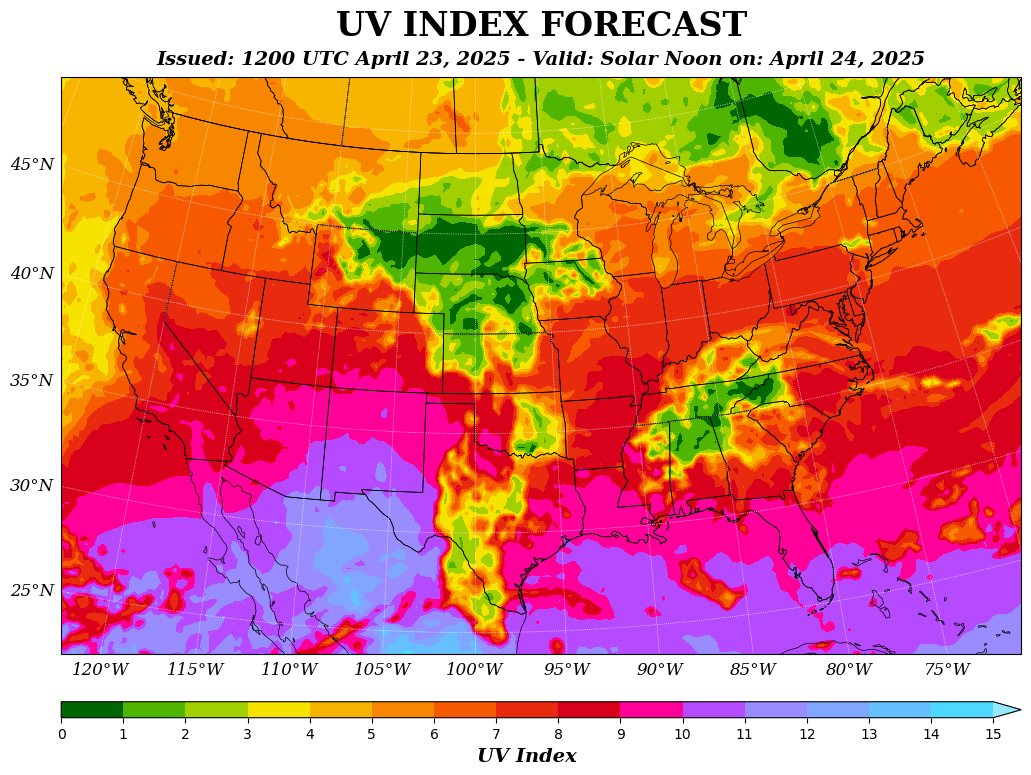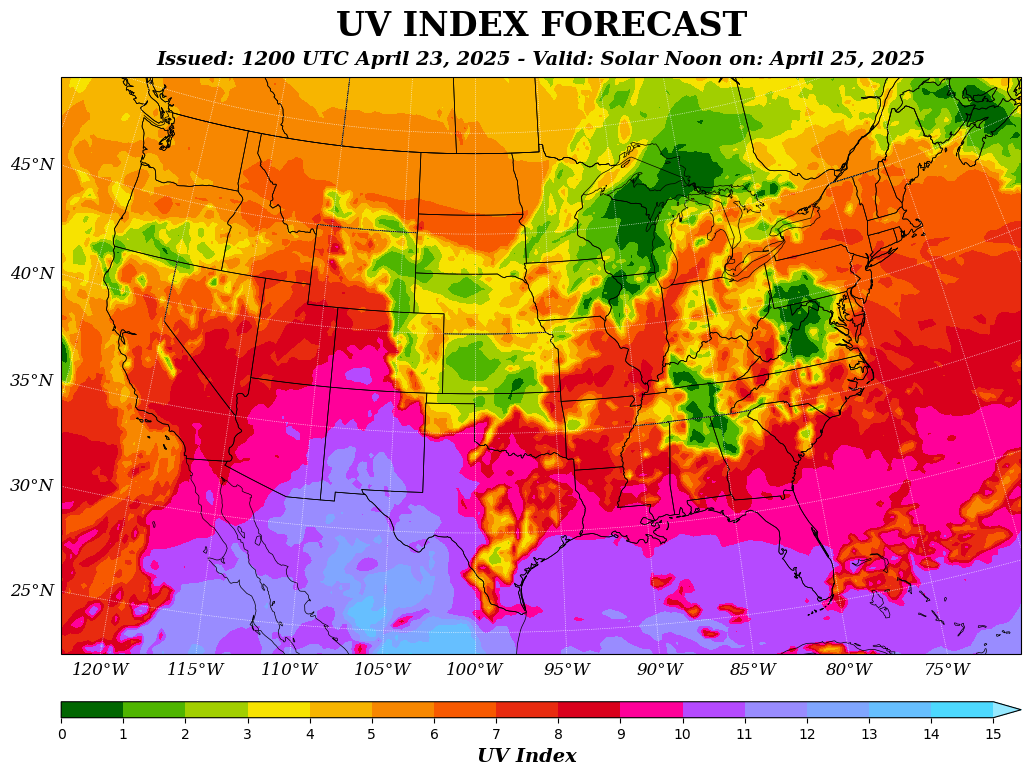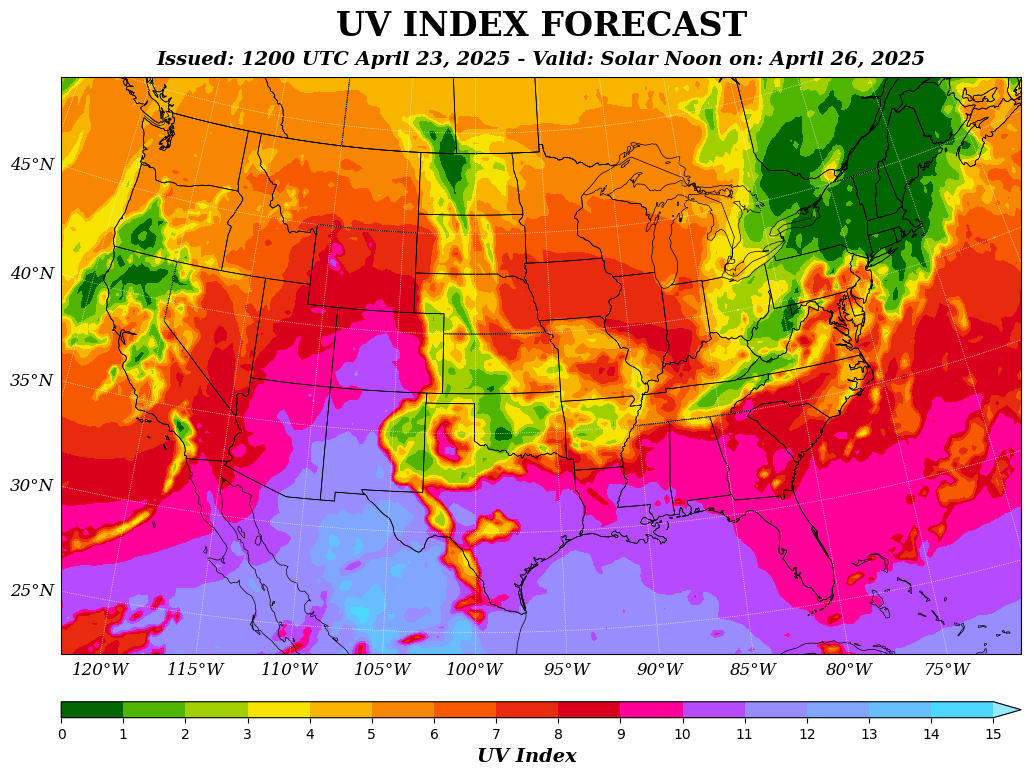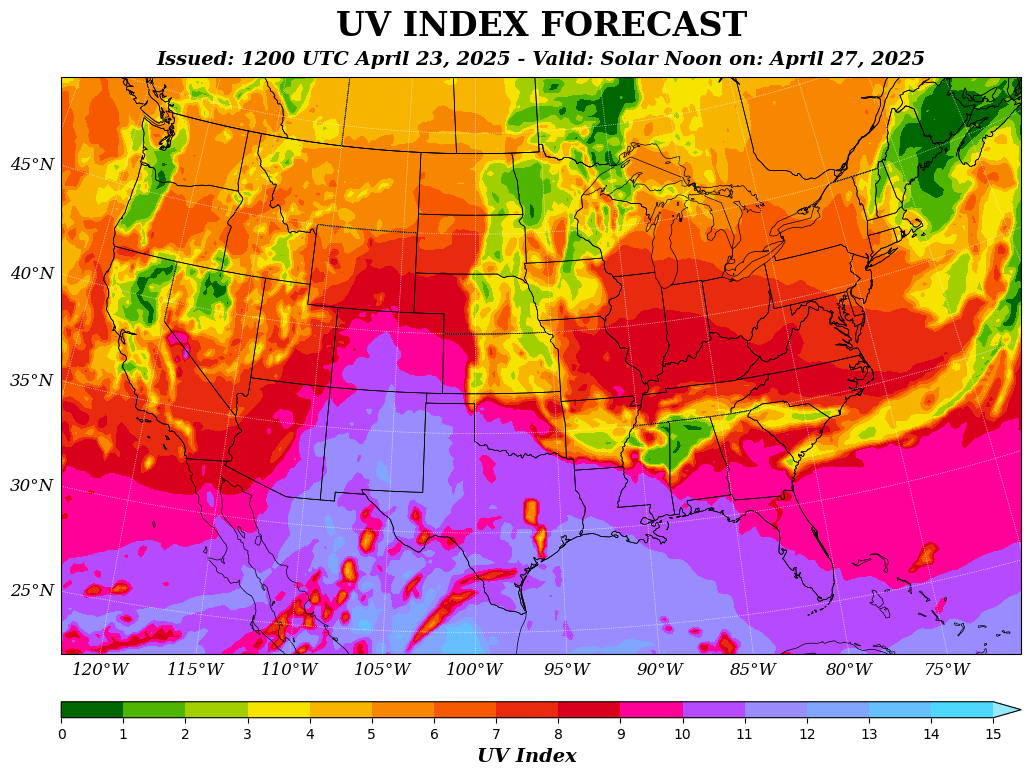Northeast UV Index Forecast
| Sun | Mon | Tue | Wed | Thu | Fri |
| 4.8 | 5.4 | 6.2 | 4.8 | 4.9 | 5.8 |
| Medium | Medium | High | Medium | Medium | High |
UV forecast courtesy of and Copyright © KNMI/ESA (http://www.temis.nl/). Used with permission.
EPA 4 Day National UV Index Forecast
Provided by the US Environmental Protection Agency SunWise Program






About UV Index and the UV Index Scale
The ozone layer shields the Earth from harmful UV radiation. Ozone depletion, as well as seasonal and weather variations, cause different amounts of UV radiation to reach the Earth at any given time. This UV-Index forecast uses the US Environmental Protection Agency SunWise Program multi-day UV-Index forecast which predicts radiation levels on a 1-11+ scale.
1-2: Low
A UV Index reading of 2 or less means low danger from the sun's UV rays for the average person:
3-5: Medium
A UV Index reading of 3 to 5 means moderate risk of harm from unprotected sun exposure.
6-7: High
A UV Index reading of 6 to 7 means high risk of harm from unprotected sun exposure. Apply a sunscreen with a SPF of at least 15. Wear a wide-brim hat and sunglasses to protect your eyes. Protection against sunburn is needed. Reduce time in the sun between 10 a.m. and 4 p.m. Cover up, wear a hat and sunglasses, and use sunscreen.
8-10: Very High
A UV Index reading of 8 to 10 means very high risk of harm from unprotected sun exposure. Minimize sun exposure during midday hours, from 10 a.m. to 4 p.m. Protect yourself by liberally applying a sunscreen with an SPF of at least 15. Wear protective clothing and sunglasses to protect the Skin and eyes. Take extra precautions. Unprotected skin will be damaged and can burn quickly. Otherwise, seek shade, cover up, wear a hat and sunglasses, and use sunscreen.
11+: Extreme
A UV Index reading of 11 or higher means extreme risk of harm from unprotected sun exposure. Try to avoid sun exposure during midday hours, from 10 a.m. to 4 p.m. Apply sunscreen with an SPF of at least 15 liberally every 2 hours. Take all precautions. Unprotected skin can burn in minutes. Beachgoers should know that white sand and other bright surfaces reflect UV and will increase UV exposure. Try to avoid sun exposure between 10 a.m. and 4 p.m. Seek shade, cover up, wear a hat and sunglasses, and use sunscreen.
Me and My Shadow:An easy way to tell how much UV exposure you are getting is to look for your shadow:
If your shadow is taller than you are (in the early morning and late afternoon), your UV exposure is likely to be low.
If your shadow is shorter than you are (around midday), you are being exposed to high levels of UV radiation. Seek shade and protect your skin and eyes.







